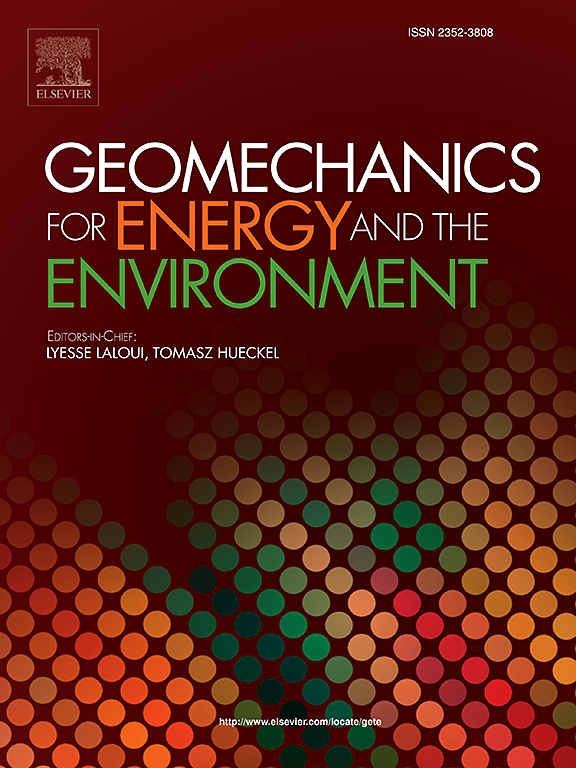The impact of heat exchanger loop configuration on heat transfer in energy piles
IF 3.3
2区 工程技术
Q3 ENERGY & FUELS
引用次数: 0
Abstract
This paper examines the impact of parallel and series U-loop configurations on heat transfer in energy piles. Heating experiments were conducted on a set of four field-scale energy piles installed under a five-storey building, sharing identical dimensions (diameter = 0.9 m and length = 15 m) but varying numbers of U-loops (loops 1, 2, 3, and 4, in Piles 1, 2, 3, and 4, respectively). The investigation highlights the significance of fluid flow, temperature, U-loop quantity and configuration on heat transfer within solitary and grouped energy piles. In the parallel configuration, heat exchange occurs concurrently across all U-loops, proportional to the flow rate. Conversely, in the series configuration, the initial U-loops dominate heat exchange, with subsequent U-loops showing diminished effectiveness in contributing to the overall heat transfer. For identical flow rates in the individual U-loops of both configurations, the group of energy piles employing parallel U-loops exhibited higher heat exchange. The findings provide practical insights into optimising U-loop configurations to improve heat exchange between the pile and the surrounding soil under the studied boundary conditions.
换热器回路构型对能源桩传热的影响
本文研究了并联和串联u型回路对能量桩传热的影响。加热实验是在一组安装在五层建筑下的四组现场规模的能源桩上进行的,这些能源桩具有相同的尺寸(直径= 0.9 m,长度= 15 m),但u形回路的数量不同(分别位于桩1、桩2、桩3和桩4中的回路1、2、3和4)。研究强调了流体流量、温度、u型环的数量和结构对孤立和分组能量桩内传热的重要影响。在并联配置中,热交换同时发生在所有u形环上,与流速成正比。相反,在串联配置中,最初的u型环主导着热交换,随后的u型环在促进整体传热方面显示出降低的有效性。在两种配置的单个u型环流速相同的情况下,采用平行u型环的能量桩组表现出更高的换热性能。研究结果为优化u型环结构以改善所研究的边界条件下桩与周围土壤之间的热交换提供了实用的见解。
本文章由计算机程序翻译,如有差异,请以英文原文为准。
求助全文
约1分钟内获得全文
求助全文
来源期刊

Geomechanics for Energy and the Environment
Earth and Planetary Sciences-Geotechnical Engineering and Engineering Geology
CiteScore
5.90
自引率
11.80%
发文量
87
期刊介绍:
The aim of the Journal is to publish research results of the highest quality and of lasting importance on the subject of geomechanics, with the focus on applications to geological energy production and storage, and the interaction of soils and rocks with the natural and engineered environment. Special attention is given to concepts and developments of new energy geotechnologies that comprise intrinsic mechanisms protecting the environment against a potential engineering induced damage, hence warranting sustainable usage of energy resources.
The scope of the journal is broad, including fundamental concepts in geomechanics and mechanics of porous media, the experiments and analysis of novel phenomena and applications. Of special interest are issues resulting from coupling of particular physics, chemistry and biology of external forcings, as well as of pore fluid/gas and minerals to the solid mechanics of the medium skeleton and pore fluid mechanics. The multi-scale and inter-scale interactions between the phenomena and the behavior representations are also of particular interest. Contributions to general theoretical approach to these issues, but of potential reference to geomechanics in its context of energy and the environment are also most welcome.
 求助内容:
求助内容: 应助结果提醒方式:
应助结果提醒方式:


